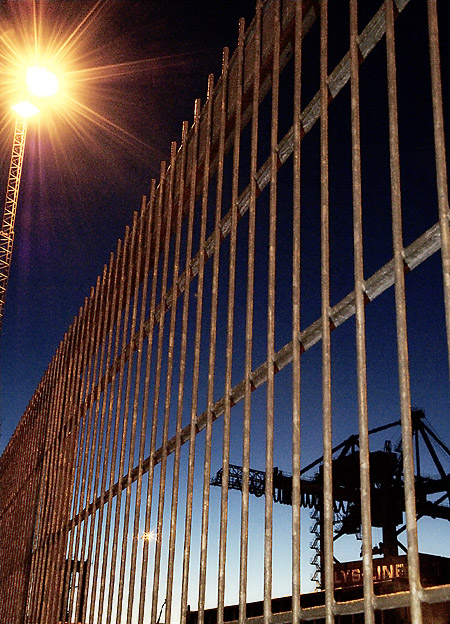Seems like Cannon made it happen:
Announcement
Collapse
No announcement yet.
Can Digital be better than Film?
Collapse
X
-
A slow b/w film (e.g., Ilford Pan F) can resolve 1000 l/mm and a 35 mm pic is 24 x 36 mm = 864 Mpixels. Even a medium colour film (Kodachrome) can resolve 400 l/mm = 138 Mpixels. With a pro camera (Hasselblad) @ 400 l/mm = 576 Mpixels. So 16.7 Mpixels, impressive though it is, is still a very far cry from film.
I'd like one, though Last edited by Brian Ellis; 17 May 2005, 02:58.Brian (the devil incarnate)
Last edited by Brian Ellis; 17 May 2005, 02:58.Brian (the devil incarnate)
Comment
-
You are threading on thin ice here...Originally posted by TransformXSeems like Cannon made it happen:
http://web.canon.jp/Imaging/eos1dsm2/
Nikon has the D2x, which is a 12 megapixel camera. At first, it seems less, but the sensor of the D2x is APS sized (the Canon Eos 1Ds MII has a full frame sensor). Consequently, the D2x has a higher pixel density than the Eos 1Ds, and is able to resolve more detail when the same lens is used (but it will only record a centered crop of the image)...
The downside to having a smaller sensor is that is is more difficult to get wide-angle: the field of view changes, so any lens on the D2x has the same viewing angle as a lens 1.5x times the focal distance on a full frame camera.
Jörg
Comment
-
Apparently (according to local news), the new cannon camera gives better contrast, saturation etc. than a proper SLR equipped with the same lenses, which as they claim is more important than the picture resolution.Originally posted by Brian EllisA slow b/w film (e.g., Ilford Pan F) can resolve 1000 l/mm and a 35 mm pic is 24 x 36 mm = 864 Mpixels. Even a medium colour film (Kodachrome) can resolve 400 l/mm = 138 Mpixels. With a pro camera (Hasselblad) @ 400 l/mm = 576 Mpixels. So 16.7 Mpixels, impressive though it is, is still a very far cry from film.
I'd like one, though
Found something in english here: http://www.popphoto.com/article.asp?...&page_number=1Last edited by TransformX; 17 May 2005, 03:14."For every action, there is an equal and opposite criticism."
Comment
-
I'd say that every true photographer would be insulted if somebody would try to tell him what's more/most important when taking that one particular photographOriginally posted by TransformXApparently (according to local news), the new cannon camera gives better contrast, saturation etc. than a proper SLR equipped with the same lenses, which as they claim is more important than the picture resolution.
Found something in english here: http://www.popphoto.com/article.asp?...&page_number=1
Comment
-
Um - I think you're in the realm of satellite or holographic film there. Most photo film is around 100 l/mm max.Originally posted by Brian EllisA slow b/w film (e.g., Ilford Pan F) can resolve 1000 l/mm and a 35 mm pic is 24 x 36 mm = 864 Mpixels. Even a medium colour film (Kodachrome) can resolve 400 l/mm = 138 Mpixels. With a pro camera (Hasselblad) @ 400 l/mm = 576 Mpixels. So 16.7 Mpixels, impressive though it is, is still a very far cry from film.
I'd like one, though
Still, the lens is what keeps either the film or the sensor from getting a good picture. A good lens is around 30-50 lp/mm (line pairs per millimeter). The best lenses you can buy (usually for field cameras) are around 100 lp/mm, and are exceedingly expensive. So, a 24x36 mm frame has a maximum "real" resolution of around 4800x7200 (remember - the measure is line *pairs* per mm, so you get double the number of pixels as line pairs), and that's with a lens that's so good you can't even buy one.
The size of a pixel in the high resolution digital cameras is abount the same as the resolving power of a really good lens, and the same can be said for high end films. So the lens is the main determining factor in sharpness.
There are a lot of factors that go into making a nice sharp image - the sensor is only one piece of the puzzle.
See this for more information (and better explanations):
- Steve
Comment
-
I agree mostly with what you say, but the 100 l/mm films are at least 100 ASA. The original Pan F was 15 ASA (I think they upped it to 20 or 25 ASA since with a slight loss of resolution). The emulsion thickness is exccedingly thin with essentially a single layer of AgBr crystals. Colour film can never approach mono film for a given speed, because of the thickness of the tripack+yellow filter layer, which is why Kodachrome at 25 ASA is not nearly as good, despite the image being in dyes, rather than silver.
Good point re lenses, though. The best one I have is an ancient Asahi Takumar 55 mm f 2.0 which, when stopped down to f 5.6 (the optimum) will resolve 350 l/mm at the centre and 300 at the corners, at 2 m. The modern craze for zoom lenses is the death of resolution, though, and your figures seem quite typical for a good zoom. I have 4 fixed focal length lenses for my SLR, for that reason. I concur that a zoom lens is more convenient.Brian (the devil incarnate)
Comment
-
I still have my ancient black Asahi Spotmatic II with a Takumar 50mm f/1.2 lens and a very fine Takumar 200mm fixed zoom (don't recall the maximum aperture). I had the camera sent out from Hong Kong when I was young. Very nice camera system.Originally posted by Brian Ellis... The best one I have is an ancient Asahi Takumar 55 mm f 2.0 ...<TABLE BGCOLOR=Red><TR><TD><Font-weight="+1"><font COLOR=Black>The world just changed, Sep. 11, 2001</font></Font-weight></TR></TD></TABLE>
Comment
-
I like my collection of Schmidt and Maksutov mirror lenses. No zoom or multi-F/stops, but ohhhh boy are they nice
For the record: I like the Maksutov lenses better, and especially a Russian made 200mm I picked up at a camera show last year.
Then there are those days when I adapt a C-5 Celestron Spotter for some long-distance work.
Dr. MordridLast edited by Dr Mordrid; 17 May 2005, 10:57.Dr. Mordrid
----------------------------
An elephant is a mouse built to government specifications.
I carry a gun because I can't throw a rock 1,250 fps
Comment
-
I've also got a Zeiss monocular which has a superb bright sharp image. Fine optics are a beautiful thing.<TABLE BGCOLOR=Red><TR><TD><Font-weight="+1"><font COLOR=Black>The world just changed, Sep. 11, 2001</font></Font-weight></TR></TD></TABLE>
Comment







Comment